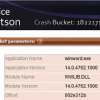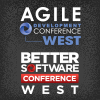 |
Using OKR Dashboards to Keep Focus on the Goal Employees often lack two key pieces of information that would help keep them motivated and focused: What goal am I pursuing in my current task? And how much progress is being made? You can generate constant transparency around answers to these questions by using dashboards that outline objectives and key results, or “OKRs.” Keep everyone informed about current goals and the path to achieving them.
|
|
 |
5 Key Elements for Designing a Successful Dashboard When you’re designing a dashboard to track and display metrics, it is important to consider the needs and expectations of the users of the dashboard and the information that is available. There are several aspects to consider when creating a new dashboard in order to make it a useful tool. For a mnemonic device to help you easily remember the qualities that make a good dashboard, just remember the acronym “VITAL.”
|
|
 |
Using Metrics to Track the Efficiency of Agile Teams Choosing agile metrics that will be most effective in measuring application success is a challenge, and then tracking those metrics can be tricky as well. But with a good strategy, agile metrics can be a powerful tool for sharing the team’s progress and identifying existing and possible roadblocks. These meaningful metrics can reduce confusion and bring clarity throughout the application development cycle.
|
|
 |
How to Get Value from Measuring Agile Team Health Metrics One common metric in agile measures team health or team happiness, but creating a way to measure this that is valued by the team is not an easy task. It’s having clarity on the reason you’re measuring these metrics and who benefits from it that gives you real value. Here are some ways you can measure this elusive quality, as well as how to make sure you're gaining useful information.
|
|
 |
Building Highly Productive Teams Using a Commitment-to-Progress Ratio: Work Committed vs. Done This article explains methods to build a team that will embrace "required work" and deliver robust software in a predictable fashion. It proposes a measure that helps calculate the throughput of an agile team by comparing work committed to work actually done.
|
|
 |
Measure the Measurable: Improving Software Quality Through Telemetry Observing customers in a usability lab can be invaluable for improving product design. But, once your software leaves the lab, do you know what your customers are actually doing and whether or not your software meets their expectations? Learn how engineers on the Microsoft Office team apply a variety of software telemetry techniques to understand real-world usage, how the results drive product improvements, and how you can apply similar techniques.
|
|
|
|
Issues about Metrics about Bugs Managers often use metrics to help make decisions about the state of the product or the quality of the work done by the test group. Yet, measurements derived from bug counts can be highly misleading because a "bug" isn't a tangible, countable thing; it's a label for some aspect of some relationship between some person and some product, and it's influenced by when and how we count ... and who is doing the counting.
|
|
|
|
Learning from Experience: Software Testers Need More than Book Learning People often point to requirements documents and process manuals as ways to guide a new tester. Research into knowledge transfer, as described in The Social Life of Information, suggests that there is much more to the process of learning. Michael Bolton describes his own experiences on a new project, noting how the documentation helped ... and didn't.
|
|
 |
What You Can't Measure, You Can't Improve: Measurements for a Continuous Delivery Organization
Slideshow
Ashwin Desai has faced the daunting challenge of using measurements and metrics to assess and improve product quality through process change. Join him as he shares what he learned on the journey to move the sports technology firm Hudl from a reactive approach to quality to quantitative, data driven, proactive means to improve product quality. Just as Hudl itself provides the ability for coaches and teams to analyze and improve their performance based on data, they wanted to move the teams building Hudl to use the same approach to improve quality. Ashwin shares how they selected measurements, the work agile teams completed to get buy-in for the measurements, and how the data was normalized to provide understanding of the quality of each initiative and the variance between them.
|
Ashwin Desai
|
 |
Setting and Measuring Individual Performance in Agile Teams
Slideshow
When software development teams work in waterfall environments, traditional performance management programs can help encourage personal development and innovation. However, Tina Rusnak says that when organizations move to agile, measuring performance takes on a new form that often causes...
|
Tina Rusnak
|
 |
Video: The Mismeasure of Software: The Last Metrics Talk You'll Ever Need to Hear
Video
The Mismeasure of Software: The Last Metrics Talk You'll Ever Need to Hear Lee Copeland claims that most organizations have some kind of metrics program—and almost all are ineffective. After explaining the concept of measurement, Lee describes two key reasons for these almost universal...
|
Lee Copeland, Software Quality Engineering
|
 |
How Metrics Programs Can Destroy Your Soul
Slideshow
Testers are often evaluated by metrics that don’t really quantify the value of their work. Metrics such as tests planned, tests executed, coverage achieved, and defects reported all...
|
Scott Barber, SmartBear
|
Visit Our Other Communities
AgileConnection is a TechWell community.
Through conferences, training, consulting, and online resources, TechWell helps you develop and deliver great software every day.

